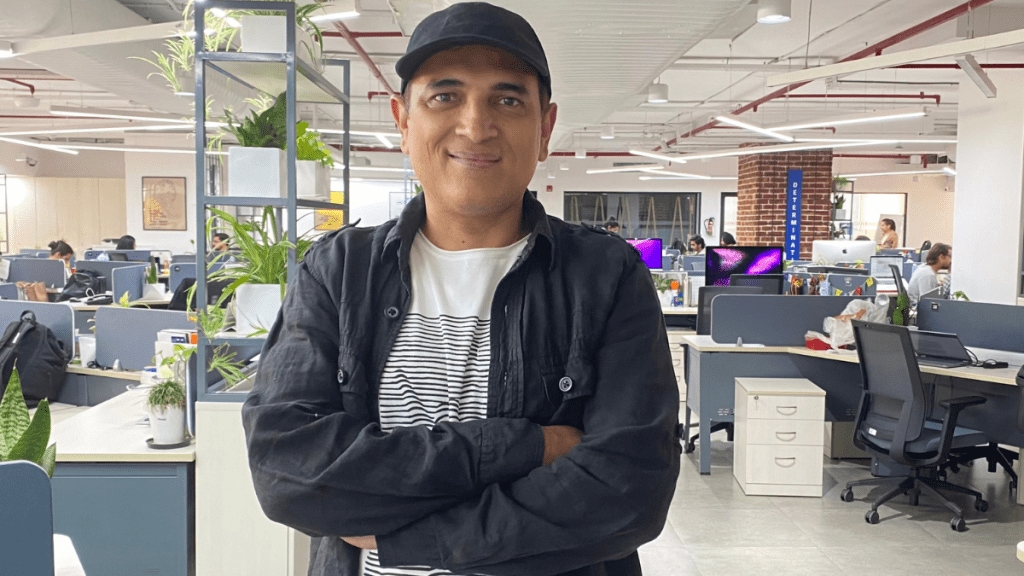The creative space in India is evolving, and AI is becoming a better friend to the youth than fellow humans, a recent report by Cheil India unveiled. In this interview, Amit Nandwani, national creative director, Cheil India, speaks to Geetika Srivastava about how ad agencies are leveraging technology to recharge their creative product amid changing expectations of audiences and clients. (Edited excerpts)
How is AI upending advertising as we know it?
AI-driven hyper personalisation tops the chart with its ability to craft tailored product recommendations, personalised campaigns and interactive customer interactions. Building strong online communities and maintaining an authentic brand voice too are becoming essentials to connect with audiences, especially Gen Z. Cross-brand collaborations have also gained currency this year with brands moving out of their comfort zones to tap into audiences of the other brands. Consumers today are increasingly preferring brands that prioritise ethical and sustainable practices, and are transparent about them.
What are the biggest challenges before creatives today?
A lot of challenges are coming up at the same time for creatives today, creating a perfect storm. Technology, especially AI, is a shifting sand, as it keeps evolving with each passing day. Moreover, with the advent of digital and social media platforms, consumer behaviour is in a state of constant flux. These platforms have changed the way people interact with brands, demanding a shift from traditional advertising campaigns to more immersive experiences. So, the creatives have to always stay updated and ahead of the curve to resonate with their audiences across multiple platforms.
Is the creative side of the business ready to take advantages of the changes AI is expected to bring about?
With big companies like LinkedIn and Meta launching generative AI tools for ads, the advertising landscape is bound to change significantly. However, I strongly feel these AI tools should be seen as allies, not a replacement for agency creatives. While AI can do day-to-day content creation tasks, one thing that it can’t do is fresh, insightful thinking and building an emotional connect with the audience. At least, at this point in time.
Now that you have AI in your arsenal, have client expectations changed from agency creatives?
The era of “Mad Men,” where clients advertised mainly on TV, radio and print is gone. Technology has taken over advertising in more ways than one, and so have the client expectations around it. Given the frenetic pace at which businesses work nowadays, clients expect more in much less time. Besides, they expect agencies to have a tech mindset, and the creative teams working on their campaigns have to march in lockstep with the latest tech trends doing the rounds. This is why we now have specialists who focus on different mediums – social media, digital media, and traditional media.
How do you maintain a fine balance between being creative and not falling prey to the prevalent cancel culture?
We are going through strange times where tolerance levels are at an all-time low. Fear is a direct by-product of the cancel culture. Clients don’t want to take any risk when it comes to advertising as huge budgets are involved. They try to play it safe for the fear of getting trolled.
As agency creatives, we have to walk a fine balance between conveying the message in a manner that cuts through the clutter, yet lands with political correctness.
I believe if the brands are able to define their purpose well to the audiences, they are able to see through the brand’s intent and hence, the chances of a backlash are minimised.
In what ways has digital, especially the short-form video format, changed the game for brands?
Short-form video content has brought a big shift in digital content consumption. In today’s digital world, the consumer is swamped with an overwhelming amount of information, leading to shorter attention spans. These videos go perfectly with this trend, providing snackable content that can be consumed on the go.
By embracing this format, we can create more shareable and engaging campaigns that connect with the modern consumers. From the brand’s point of view, they are also an effective way to build frequency of the core brand message while maintaining cost effectiveness.

